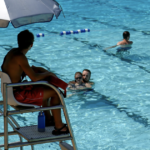Alabama is a state that is blessed with various water bodies such as beaches, lakes, and swimming pools. These water bodies are a source of relaxation and entertainment for locals and tourists. However, with the increasing number of water-based recreational activities, the risks of accidents and drowning have also increased. This is why lifeguard training is critical for ensuring safety in the water.
In this article, we will discuss the lifeguard training program in Alabama, its requirements, and how it ensures safety in the water.
Requirements for Lifeguard training in Alabama
To become a certified lifeguard in Alabama, you must complete a training program that meets the state’s standards. The requirements for the training program in Alabama are as follows:
Age: You must be at least 15 years old to take the training course to become a lifeguard.
Swimming Ability: You need to be a proficient swimmer to become a lifeguard. You must be able to swim 300 yards continuously using front crawl and breaststroke, retrieve a 10-pound brick from a depth of at least 7 feet, and tread water for 2 minutes using only your legs.
CPR and First Aid Certification: Lifeguards must be trained in cardiopulmonary resuscitation (CPR) and first aid. You need to complete a course in CPR and first aid before you can take the lifeguard training program.
Lifeguard training Program in Alabama
The lifeguard training program in Alabama is designed to provide comprehensive training to individuals who are interested in becoming a lifeguard. This training program is available through different organizations such as community centers, schools, and private companies. The program includes both classroom instruction and practical training in the water.
Classroom Instruction
The classroom instruction in the lifeguard training program covers various topics related to lifeguarding. Lifeguards are taught how to prevent accidents, recognize and respond to emergencies, and provide first aid and CPR when needed. The classroom instruction includes topics such as water safety, risk management, and emergency response.
Water Safety: Lifeguards are trained to identify potential hazards in the water, including rip currents, waves, and underwater obstructions. They learn how to assess the risks and take preventive measures to avoid accidents.
Risk Management: Lifeguards learn how to manage risks associated with water-based recreational activities. They are taught to be proactive and take preventive measures to ensure safety in the water.
Emergency Response: Lifeguards are trained to recognize and respond to emergencies quickly and efficiently. They learn how to perform CPR and provide first aid to victims of drowning or other water-based accidents.
Practical Training
The practical training in the lifeguard training program focuses on developing the lifeguard’s swimming and rescue skills. Lifeguards are taught how to perform various types of rescues, such as active drowning and passive drowning rescues. They are also trained to use rescue equipment, such as rescue tubes and buoys.
Swimming Skills: Lifeguards are taught different swimming techniques that will allow them to swim efficiently and quickly through the water. They learn how to swim different strokes and maintain proper body position to avoid fatigue.
Rescue Skills: Lifeguards are trained to perform different types of rescues, including active and passive rescues. They learn how to use rescue equipment such as rescue tubes, buoys, and other tools that can be used to save lives.
The Importance of Lifeguard training in Ensuring Safety in the Water
Lifeguard training is critical for ensuring safety in the water. When lifeguards are trained properly, they can prevent accidents from happening and respond quickly and effectively in emergencies. Lifeguards play a crucial role in ensuring that people enjoy water-based recreational activities without the fear of drowning or other accidents.
Preventing Accidents
One of the most important roles of a lifeguard is to prevent accidents from happening in the first place. This is done through proper water safety management, risk assessment, and enforcing safety rules. Lifeguards are trained to identify potential hazards in the water and take preventive measures to avoid accidents. They also educate the public about water safety and encourage them to follow safety rules such as wearing life jackets and staying in designated swimming areas.
Quick Response to Emergencies
Despite preventive measures, accidents can still happen in the water. Lifeguards are trained to recognize and respond to emergencies quickly and efficiently. They are trained to perform CPR and provide first aid to victims of drowning or other water-based accidents. Lifeguards are also equipped with rescue equipment such as rescue tubes, buoys, and other tools that can be used to save lives.
Promoting Confidence and Enjoyment
Lifeguard training also promotes confidence and enjoyment in water-based recreational activities. When people see lifeguards on duty, they feel more confident and secure in the water. This confidence leads to a more enjoyable experience for everyone involved. Additionally, lifeguards can provide assistance and guidance to those who may be hesitant or inexperienced in the water, allowing them to participate in activities that they may have otherwise avoided.
The American Lifeguard Association
The American Lifeguard Association (ALA) is one of the leading organizations that provide lifeguard courses and training programs in the United States, including Alabama. The ALA provides comprehensive lifeguard training that meets the national’s standards for certification.
The American Lifeguard Association® has been listed over the years with the CDC Healthy Swimming website. In addition, the U.S. Department of Labor and the U.S. General Service Administration (GSA) has determined that the American Lifeguard Association offers lifeguard certification programs similar to those provided by the American Red Cross. Since the early 1990s, we have helped ensure that all our training programs meet Occupational Safety and Health Administration requirements.
Under the Fair Labor Standards Act, the U.S. Department of Labor the federal Authority having jurisdiction (AHJ) has determined that the American Lifeguard Association meets the national standards for lifeguard training and certification. The American Lifeguard Association is one of a handful of national training entities listed by the United States Government to meet these federal requirements. As a result of this, the American Lifeguard Association meets the national requirements for lifeguard training and certification in all 50 states and the District of Columbia, and U.S. territories.
Conclusion
Lifeguard training in Alabama is critical for ensuring safety in the water. The lifeguard certification program in Alabama is designed to provide comprehensive training to individuals who are interested in becoming a lifeguard. The program includes both classroom instruction and practical training in the water.
Lifeguard training promotes water safety, risk management, and emergency response. When lifeguards are trained properly, they can prevent accidents from happening, respond quickly and effectively in emergencies, and promote confidence and enjoyment in water-based recreational activities.
The American Lifeguard Association is one of the leading organizations that provides lifeguard certification programs in the United States, including Alabama. The ALA is recognized by the United States government for providing quality training programs that meet the national standards for certification.







